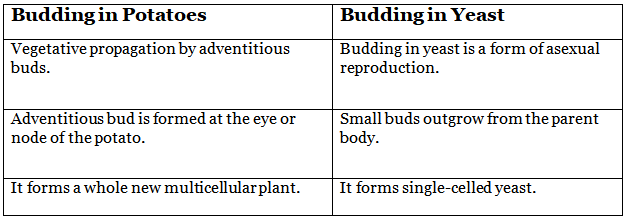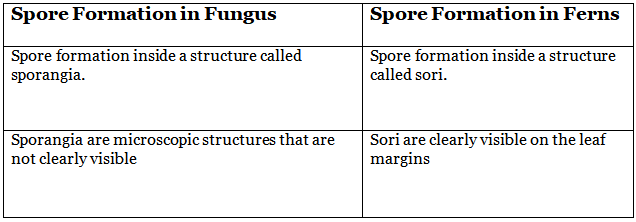Class 7 Science Chapter 8 Question Answers - Reproduction in Plants
Q1. What is the difference between Cutting and budding?
Ans: The difference between cutting and budding are:
Q2. What is the difference between Budding in potato and budding in Bryophyllum?
Ans: The difference between potato budding and Bryophyllum budding are:

Q3. What is the difference between Stamen and Pistil?
Ans: The difference between stamen and pistil are as follows:
Q4. What is the difference between Budding in potato and budding in yeast?
Ans: Difference between budding in potato and budding in yeast are as follows:
Q5. What is the difference between Spore formation in fungus and spore formation in fern?
Ans: Difference between spore formation of fungus and fern are:
Q6. Draw and label the parts of a bisexual complete flower.
Ans:

Q7. Why is pollination important for sexual reproduction in plants?
Ans: The fertilization of male and female gametes in an organism is known as sexual reproduction. In plants, the male gamete is found in pollen grains and the pollen grains are found in the anther part of the flower. Whereas, female gametes are present inside the pistil. For fertilization to occur male gamete need to come in contact with the female gamete which is carried out with the help of pollination. Pollination is the process by which the pollen grains are transferred to the stigma of the pistil so that the male gamete can fuse with the female gamete which is present inside the ovary of the pistil. After fertilisation zygote is formed. Hence, pollination is a crucial step for sexual reproduction in plants. Pollination can be of two types: i) self-pollination and ii) cross-pollination.
Q8. What are the different methods of seed dispersal and how are the seeds adapted for the same?
Ans: Seeds dispersed to different areas for better colonization and survival. Seeds can be dispersed by different methods using different means depending on the seed’s adaptation.
- Dispersal by wind: Seeds that are dispersed by wings.
- Adaption: lightweight, dry, feathered, or winged.
Example: Winged seeds of drumstick and maple, seeds of grasses and sunflowers, etc. - Dispersal by water: Seeds that are dispersed by water.
- Adaption: light and buoyant as well as water-resistant.
Example: This can be seen in coconut which is a buoyant floating seed with an outer fibrous water-resistant coating. - Dispersal by animals: Such seeds are adapted to attach to the body of the animal as they graze or pass along the plants.
- Adaptation: Seeds usually have spiny or hook-like structures that attach to the bodies of the animals and are then carried away to distant places.
Example: Mango, Guavas, etc. - Dispersal by fruit bursts: When fruits burst the seeds within are released far from the parent plant.
Example: This is seen in castor
Q9. Explain the importance of seed dispersal.
Ans: Seed dispersal is the process of spreading a plant seed away from its parent plant. Seed dispersal is important in many ways such as:
- Prevents competition between new plants and parent plants for the limited nutrients, sunlight, and water.
- Seed dispersal also ensures the continuity of the species and prevents the plant from extinction.
- Seed dispersal allows plants to invade and colonize newer areas.
- It reduces the chance of predators destroying the whole plant species.
- Speed dispersal also makes plants adapt to new environments.
|
666 docs
|
















